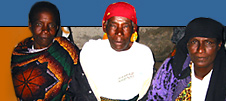|
||
 |

|
 |
|
|
A Future Search on Urban Mobility in Salt Lake City, Utah Build more roads? Maybe not: Leaders, Public Look at Solutions to Transit Woes Mayors, legislators, governmental associations, transit professionals, advertisers, disabled groups, taxpayers -- all gathered at the Salt Palace for three days to focus on finding solutions to the growing problem of congestion along the Wasatch Front. In that time, the 90-plus people "really got honest about the transportation challenges we have for our region," said Roger Borgenicht, chairman of the Future Moves Coalition, a public interest transportation coalition. The purpose of the conference was to envision a future for transportation and transit in Utah, and those attendees will take ideas generated back to their agencies or towns and begin to put them to work. Utah Transit Authority general manager John Inglish said they tried to invite "a real broad cross section" of individuals to the Future Search Urban Mobility Conference last week. "The idea is to see what happens if people without a transportation background come together and present their own ideas," Inglish said. Inglish said his biggest surprise was that the public is becoming more and more sophisticated about the application of communication technology. "You ought to be able to be standing somewhere and have your cell phone tell you where the nearest bus stop is and when the next bus is coming," he said. While UTA has been looking at information technology for a while, Inglish said he was surprised how many at the conference had similar ideas. "That says to me we need to put a greater emphasis on information technology," he said. A focus on information technology is a big switch from the focus just a few decades ago. When Inglish started in the transportation industry 31 years ago, there was no UTA. Everything was highway construction, and environmental concerns were just becoming hot issues. "Freeways were finally being voted on and turned down," he said. UTA was formed in the early 1970s, and, about 20 years ago, began to envision a basic light-rail system. "It was so out-there kind of thinking," he said. "At that time, I thought that would be a career objective. I would spend my life doing that. Now, I rode it in here today." Borgenicht said he sensed an eagerness at the conference. "The kind of transportation investments we make in the next 10 years are really going to set a pattern," he said. "People here recognize freedom will come out of more choices." Those choices include more than just deciding which car to drive, he said. Rail transit, biking and walking will be essential alternatives. "Just building more freeways and widening roads is a dead-end street," he said. "I think the momentum's changed 180 degrees in the last year and a half. The attitude of most people is we need to develop state-of-the art transit. "That doesn't mean I'm going to give up my car. I'm just not going to have to use it for everything." |
|
|
|
home | introducing
the method | what is future search? | conditions for success | methodology |